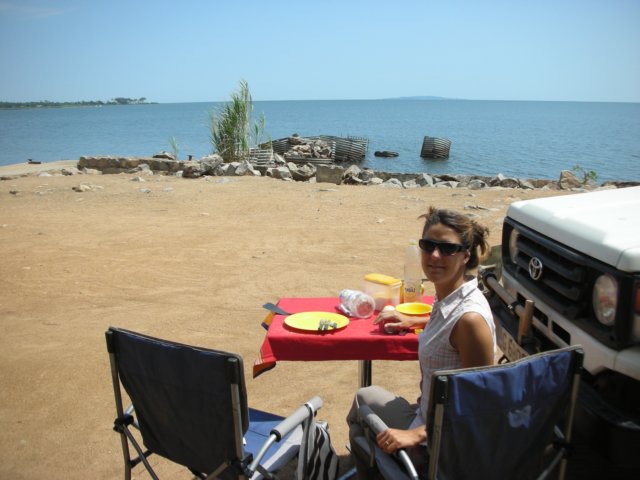

ecological disater may come from sodium cyanide from nearby gold mines. But problems already started in the early colonial era with increased topsoil being washed into the lake due to plantations of tea, coffee and sugar. Increased levels of toxic pesticides and other agricultural chemicals, in addition to increased population around the lake promoted algea growth. Overfishing also occured. Nile Perch, heavily introduced in the 1960's as it grows big (up to 100kg, 2m long) then ate most of the native fish - leading to "the greatest vertebrate mass extinction in recoreded history".
The lake's algea levels have increased fivefold in the last four decades. The lower level of the lake now consists of dead water - lacking any exygenation or fish activity below about 30m. A clear indication of the deterioration has been the rapid spread of water hyacinth. Indirectly, this has also lead to a rapid growth in the number of bilharzia-carrying snails. Sewage pumped into the lake has increased the risk of sanitary-related diseases such as cholera.
Photo album created with Web Album Generator